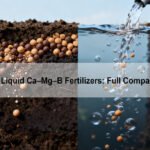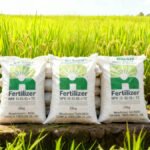Let more growers get greater benefits
What is the difference between urea and NPK fertilizer?
- Industry News
- May 3, 2018
- 2:47 pm


When it comes to fertilizers, two common types—urea and NPK fertilizers—are often discussed among agricultural professionals and gardeners. While both are widely used to enhance plant growth and boost yields, they serve different functions and suit different crop and soil needs. Here, we’ll take a deep dive into the differences between urea and NPK fertilizers, exploring their benefits, applications, and best practices.
List of Contents
What is Urea Fertilizer?
urea is a synthetic nitrogen-based fertilizer, represented chemically as CO(NH₂)₂. It contains 46% nitrogen, making it one of the highest nitrogen-concentration fertilizers available. Urea is prized for its efficiency in providing plants with nitrogen, a crucial element for leaf and stem development. Because nitrogen promotes chlorophyll production, urea is often chosen for its capacity to stimulate rapid plant growth.
Pros of Urea Fertilizer:
- High Nitrogen Content: Urea is one of the most nitrogen-rich fertilizers, providing plants with the nutrients needed for lush, green growth.
- Cost-Effective: With its high concentration, urea is generally more economical on a per-pound basis than other nitrogen fertilizers.
- Readily Available: Urea is easy to source, making it a popular choice for both large-scale and small-scale farming operations.
Cons of Urea Fertilizer:
- Nitrogen Loss: Without careful handling, nitrogen in urea can volatilize as ammonia gas, leading to nutrient loss.
- Soil Acidification: Urea can cause soil acidification if used excessively, impacting long-term soil health.
- Single Nutrient: Urea only supplies nitrogen, so additional fertilizers may be required to meet plants’ complete nutritional needs.
Application Tips for Urea:
- Apply urea directly to the soil and mix well to reduce nitrogen loss.
- Avoid using urea in hot weather to minimize volatilization.
- Consider combining urea with other fertilizers that provide phosphorus and potassium if a balanced nutrient profile is needed.
What is NPK Fertilizer?
NPK fertilizers is a complete, balanced fertilizer that provides nitrogen (N), phosphorus (P), and potassium (K) in various ratios tailored to specific crop needs. Each component has unique benefits: nitrogen promotes foliage growth, phosphorus aids root and flower development, and potassium strengthens plant resilience.
Risso has several types of NPK fertilizers, and within each type there are many formulations, each designed for specific plant growth stages:
Pros of NPK Fertilizer:
- Balanced Nutrients: NPK fertilizers provide a balanced nutrient profile, ideal for overall plant health.
- Customizable Ratios: NPK fertilizers come in various formulations, allowing growers to select ratios that match their plants’ developmental stage.
- Soil Enrichment: The combined elements help maintain soil fertility, reducing the need for multiple individual fertilizers.
Cons of NPK Fertilizer:
- More Expensive: NPK fertilizers are generally more costly than single-nutrient fertilizers like urea.
- Risk of Imbalance: Using an incorrect NPK ratio can lead to nutrient imbalances that may harm plant growth.
- Application Frequency: Due to their balanced nature, NPK fertilizers may require more frequent application to sustain nutrient availability.
Application Tips for NPK Fertilizer:
- Choose the right NPK ratio based on the crop and its growth stage.
- Apply NPK fertilizer uniformly around the root zone to ensure even nutrient distribution.
- Avoid over-application, as excess nutrients can lead to fertilizer burn or leach into waterways.


Comparing Urea and NPK Fertilizers
| Feature | Urea Fertilizer | NPK Fertilizer |
|---|---|---|
| Nutrient Content | Primarily nitrogen (46%) | Contains nitrogen, phosphorus, potassium |
| Application Purpose | Boosts rapid vegetative growth | Supports balanced growth and development |
| Cost | Generally cheaper per unit of nitrogen | Higher cost, especially for specialized ratios |
| Soil Impact | Can cause soil acidification | Generally supports balanced soil nutrition |
| Best Use Cases | Ideal for nitrogen-hungry plants | Versatile; suited for most crops and stages |
Which Fertilizer Should You Choose?
- For Rapid Growth Needs: If the primary goal is to boost foliage quickly, particularly in nitrogen-deficient soils, urea can be highly effective. However, it is essential to supplement with phosphorus and potassium as the plants mature, or combine urea with a balanced NPK fertilizer to avoid deficiencies.
- For Balanced, Long-Term Nutrition: NPK fertilizers offer a more holistic nutrient solution, supporting all stages of plant growth and development. For gardeners and farmers seeking a well-rounded approach, NPK fertilizers in appropriate ratios provide a straightforward solution without the need for multiple applications of different nutrients.
Conclusion
Both urea and NPK fertilizers are valuable tools in agriculture, each with specific applications and benefits. Urea, with its high nitrogen concentration, is excellent for spurring fast growth and greening, whereas NPK fertilizers provide a balanced approach, making them suitable for a wide range of crops and growth stages. By choosing the right fertilizer based on crop type, growth stage, and soil conditions, farmers and gardeners can achieve optimal results and support sustainable agricultural practices.
Fertilizer Related Products
If you want to know other questions about Compound fertilizers or Blended fertilizers, please contact us and we will provide professional answers.
- Article
What will you get when touch?
✔ Quick & helpful reply within 6 hours.
✔ Tailored solutions for your project.
✔ One-stop product, tech, market
TRENDING
TAIAN RISSO CHEMICAL FERTILIZER CO.,LTD
- Address: High-tech Development Zone, Taian City, Shandong Province
© Copyright 2017 RISSO CHEMICAL. All Rights Reserved.











